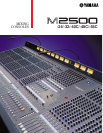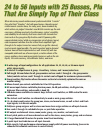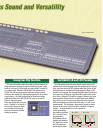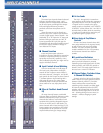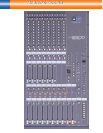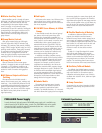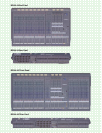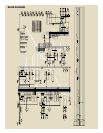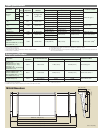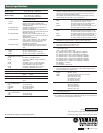
●
L R PAN
✄✄✄✄✄✄
●
LCR PAN
Signal Level
Signal Level
MONO/C BUSS★★★ STEREO BUSS L★★★ STEREO BUSS R
L
C
R
L
C
R
Switchable LR and LCR Panning
All of the mono inputs and group master controls feature LCR
switches which, when engaged, assign the related panpot to the left,
right, and center busses for LCR panning rather than just to the left
and right busses as for standard LR stereo panning. When an LCR
switches is not engaged, the corresponding PAN control functions in
the normal way, panning the signal from left to right on the stereo
buss. When a channel’s LCR switch is engaged, however, the center
panpot position directly feeds the channel signal to the MONO/C
buss, which can feed a center amp/speaker system as required,
while intermediate pan positions feed both the L or R and C buss
proportionately. The advantage is that centered signals are heard
precisely in the center of the sound field, regardless of listening
position — an ideal situation for vocals, speech, etc.
(,while intermediate
pan positions feed both
the L or R and C buss
proportionately.)
Intermediate pan pot
positions pan between
L&C when left of center
and C&R when posi-
tioned right of center.
Group/Aux Flip Function
This innovative feature makes it possible to flip the functions of
the group master 1 through 8 controls (including pan pots, assign
switches, and insert I/O jacks) with aux send controls 7 through 14
via a single switch. When the GROUP/AUX FLIP switch is set to
GROUP, the 100-mm group master faders and related controls
function in the normal way, affecting the signal fed to the console’s
group outputs — the ideal configuration for most house mixing
applications. When the GROUP/AUX FLIP switch is set to AUX,
however, the group master
faders are flipped with rotary aux
sends 7 through 14, so that all of
the console’s master aux sends
are controlled via full-length
faders for unmatched monitor
mixing convenience.
Photo: M2500-56C



